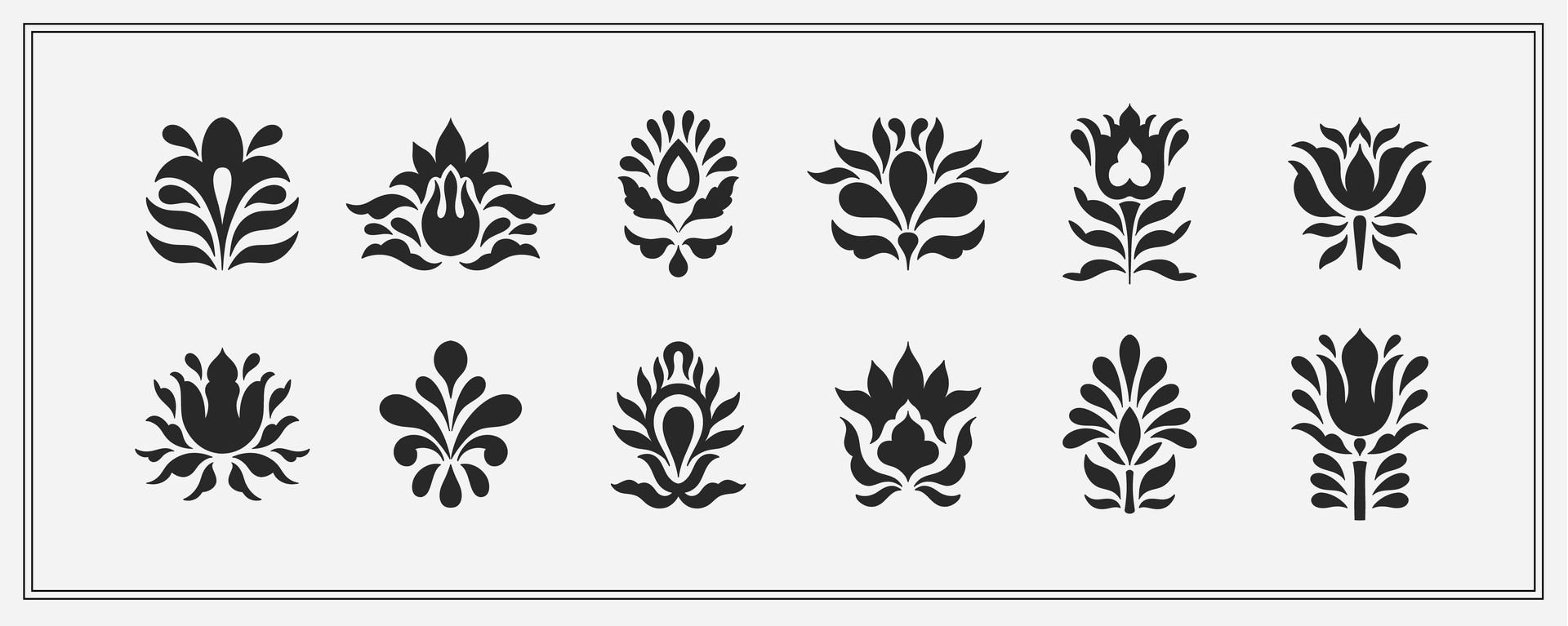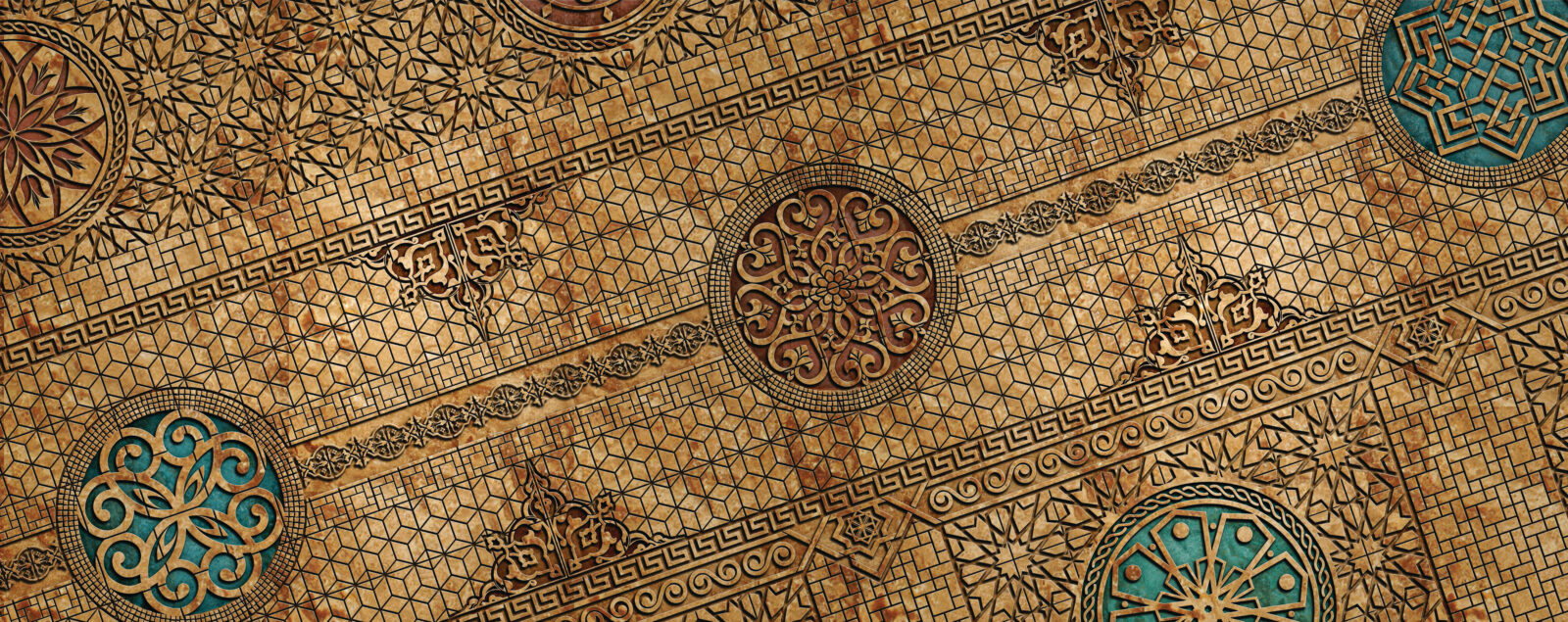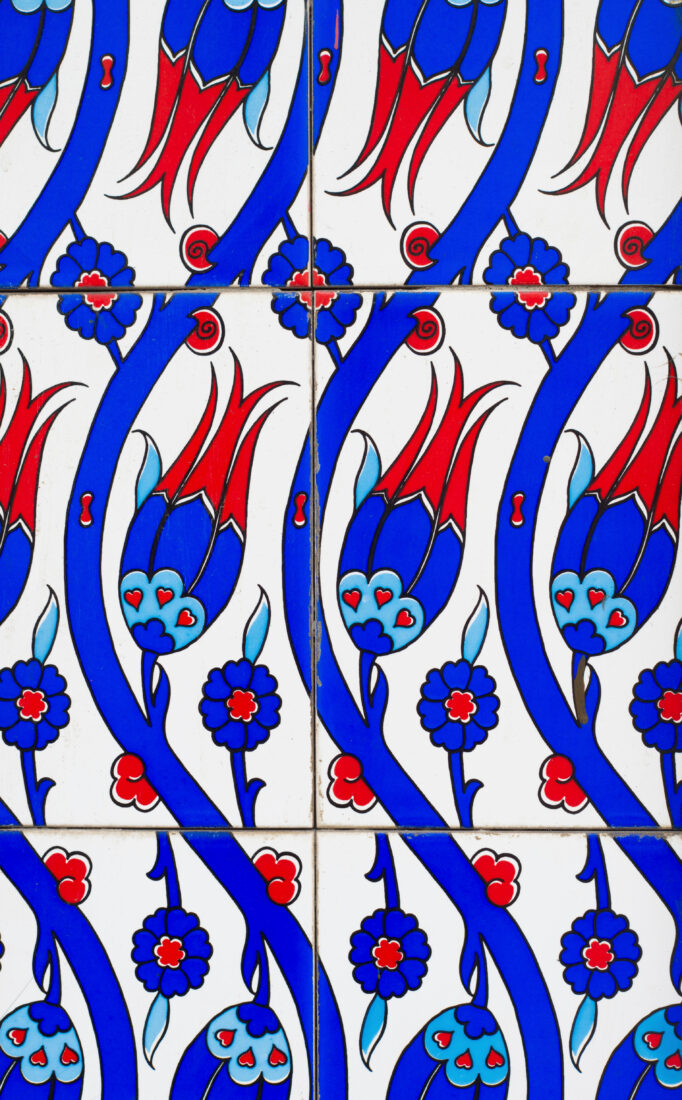
Traditional Turkish motifs, a significant part of the rich cultural heritage of the Ottoman Empire, have influenced various art forms throughout history. Starting from the 13th century, these motifs reached their peak in Ottoman art during the 16th century. Artists used these intricate and unique designs in fabrics, ceramics, carpets and miniatures, reflecting the spirit and aesthetic sensibilities of Ottoman muralists.
Today, designers are reinterpreting these traditional motifs in modern and classical styles. In Türkiye, as Western cultures revisit their roots, past artistic interpretations are merging with contemporary trends. Designers now regularly incorporate traditional Turkish motifs into fashion, textiles, ceramics, glasswork, and decorative arts, creating products that stand out for their uniqueness and aesthetic appeal. These designs play a crucial role in preserving cultural values while reflecting Turkish identity through modern interpretations.
Contemporary designs clearly showcase the Ottoman influence, as traditional motifs find new life in today’s creations. These reinterpretations ensure the continued relevance of these cultural symbols. As these motifs gain more attention in the global market, they serve as a vital link in passing Turkish culture to future generations. Studies exploring the use of these motifs in modern industrial designs highlight the lasting impact of this cultural heritage in contemporary design.

The Ottoman Empire, known for its rich cultural heritage, significantly influenced the world of art and design with its unique Turkish motifs. These motifs adorned various art objects, symbolized high status, and often served as diplomatic gifts, representing the empire's power and influence.
Symbolism in animal motifs
One of the most striking categories of Ottoman motifs is the animal motifs, including the tiger stripe and the three-spot (cintemani) designs. The tiger stripe motif, characterized by large parallel stripes, symbolizes the strength and power of the Ottoman Empire. This motif commonly appears on fabrics and is particularly favored for decorating caftans worn by Ottoman sultans and their sons.
Similarly, the cintemani motif, consisting of two wavy lines and three circles, stands out as another popular design. It symbolizes sovereignty and power, drawing inspiration from the spots on a leopard’s skin and the stripes of a tiger. This motif extensively decorates textiles, including silk brocades, carpets, and tiles.
Elegance of floral motifs
Floral motifs dominate Ottoman art, evolving from stylized forms in the early periods to more naturalistic depictions by the 16th and 17th centuries. Among the most famous floral motifs are the tulip, carnation and hyacinth. Artists used these motifs not only in textiles but also in various branches of decorative arts.
For instance, the tulip motif, a favorite in the Ottoman court, appears with such realism that it seems painted with a brush. The carnation motif, often featured on fabrics for sultans’ caftans, is arranged in rows on sliding axes to evoke a sense of eternity. Hyacinth motifs also enjoy widespread use, particularly in textiles and ceramics.

Complexity of Rumi and cloud motifs
The Rumi motif, one of the most challenging designs to draw, plays a significant role in Ottoman decorative arts. Artists commonly combine it with palmette and lotus motifs, adding a layer of complexity to design compositions. This motif appears in various forms, from simple and double-winged designs to more elaborate and intricate variations.
Cloud motifs, inspired by celestial bodies like moons and stars, represent another fascinating aspect of Ottoman design. Designers categorize these motifs based on their application, with names such as Yigma cloud and Dolanti cloud. Artists often use the cloud motif in conjunction with other traditional Turkish motifs, enhancing the overall design.
Influence of crescent and star motifs
Crescent and star motifs, perhaps the most recognizable symbols associated with the Ottoman Empire, widely influence various art forms. Artists prominently feature these motifs on the famous Catma fabrics, though their use extends to other textiles as well.
Traditional Turkish motifs significantly impact modern product design, bridging the gap between historical craftsmanship and contemporary aesthetics. Designers feature these motifs prominently in a variety of products, from home decor to lighting solutions. Here’s a look at how Turkish designers incorporate these rich cultural symbols into their work.
Designers increasingly utilize traditional Turkish motifs in everyday products. These designs now appear in decorative arts, tiles, ceramics, glass and lighting. As many countries seek to reconnect with their cultural roots, they use technology to revitalize traditional crafts. This movement aims to introduce cultural diversity and identity to the global market while maintaining competitiveness.
Designers increasingly embrace traditional Turkish motifs in their creations. Gunay Inan of Ironi, known for its high-quality handcrafted lighting and home accessories, draws inspiration from Turkish motifs and Ottoman culture. Her notable design, the "Ottoman Tulip" round dish, and her gold-plated and blue decorative objects featuring the cintemani motif, showcase her innovative use of these symbols.
Deniz Tunc, a lighting and product designer, incorporates traditional motifs like cintemani, Rumi, tiger stripe and geometric forms into her work. Her Rumi lamp and cintemani mirror highlight her creative approach to modernizing these historical elements. Tunc aims to preserve cultural heritage while using contemporary materials like silver, gold and industrial wire.
Traditional motifs significantly influence modern design trends. Asli Kiyak Ingin, a lighting designer, integrates traditional motifs with contemporary design principles. Her products, such as those featuring the tulip motif, demonstrate a harmonious blend of historical and modern elements. Similarly, Ozlem Tuna combines modern touches with traditional designs, as seen in her Laleves chandelier, which features the tulip motif with a sleek black finish.
Pasabahce, a leading glassware and accessories company, offers limited-edition items inspired by Turkish motifs. Their "Tulip of Palace" bowl incorporates motifs like tulips, carnations, and Penc, showcasing the company’s dedication to merging traditional design with modern production techniques.
Hiref Company, with its mission of "Designing Your Culture," creates contemporary products inspired by Turkish motifs. Their designs, such as the tiled tray, draw on themes like Cappadocia, Harem, Seljuk and Anatolian beliefs. They incorporate iconic elements like the Turkish blue color and crescent motif.
Overall, the integration of traditional Turkish motifs into modern product design demonstrates a vibrant fusion of cultural heritage and contemporary innovation. This approach preserves and celebrates the richness of Turkish art and design in today's global market.
Recent investigations into the evolution of Turkish motifs reveal their enduring significance in various design fields. Türkiye's resurgence in embracing its traditional motifs, despite the minimalist trends prevalent in Western countries, highlights a cultural renaissance. The influence of Western art trends has introduced abstract and geometric forms into Ottoman art, showcasing how stylized animal and floral motifs, derived from nature, have long been part of Turkish artistic heritage. These motifs carry profound meanings and continue to inspire contemporary designs.
The exploration of Turkish motifs demonstrates their versatility in creating unique designs that bridge classical and modern aesthetics. By incorporating traditional elements into contemporary materials, colors, and forms, designers transform these motifs into works of art. The ongoing use of Ottoman motifs in modern products not only celebrates Türkiye's rich cultural history but also positions these designs as future cultural bridges. This approach ensures that Turkish motifs will continue to inspire and connect future generations with their artistic legacy.